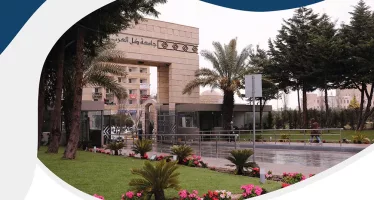The Changing Face of Foreign Direct Investment (FDI): A Greater Focus on the Emerging Markets?
 The theme of this year’s Annual Investment Meeting (AIM), which will take place in Dubai on the 8th – 10th April 2014, is Investment Partnerships for Sustainable and Inclusive Growth in Frontier and Emerging Markets. If representatives of 165 countries have been invited and a total of 10,000 visitors are expected, it is because this is a hot topic.
The theme of this year’s Annual Investment Meeting (AIM), which will take place in Dubai on the 8th – 10th April 2014, is Investment Partnerships for Sustainable and Inclusive Growth in Frontier and Emerging Markets. If representatives of 165 countries have been invited and a total of 10,000 visitors are expected, it is because this is a hot topic.
The opening day of the congress will see the presentation of the first AIM FDI report, with a special focus on FDI flows to and from frontier and emerging markets. Produced in conjunction with the fDi Intelligence unit of the Financial Times, the report will look at the key opportunities and challenges in these fast growth markets.
So what figures do we have at present for global FDI flows and investment into emerging markets?
According to the UNCTAD World Investment Report 2013 (released in June 2013), global foreign direct investment inflows fell by 18% in 2012 to US$1.35 trillion and their predictions for 2013 show little sign of a great increase with an upper range estimate of US$1.4 trillion.
“For the first time ever, developing countries absorbed more FDI than developed countries, with a 52% share, even if these inflows declined slightly by 4%.”
So is our perspective of global FDI changing?
According to Dr. Karl P. Sauvant, Resident Senior Fellow at the Vale Columbia Center on Sustainable International Investment (VCC) at Columbia University, New York, and moderator of the ministerial roundtable and a plenary session on the evolving regulatory framework for FDI at this year’s AIM congress:
“The rise of the emerging markets requires us to revisit our perspective on global FDI. Whereas the pattern shifted some 20 years ago from bipolar (dominated by the US and the European Community) to tripolar (entrance of Japan into the world FDI market and the notion of the FDI Triad), we can no longer use this characterisation. I am not sure however whether emerging markets will be able to maintain their share in world FDI flows in 2013. Their share, whilst remaining important, might drop as growth in developed economies continues to pick up.”
What type of investment are we seeing in the emerging markets?
Those emerging markets that are receiving most inward investment are those that participate in the manufacturing global value chains (GVCs). These are to be found mostly in Asia. Investment into Africa and South America is predominantly infrastructure and natural resources investment, with the exception of Mexico.
GVCs have increasing importance in terms of global trade, representing 80% of the total value, according to UNCTAD. These continue to represent a real opportunity for developing and emerging economies, contributing on average 30% to individual countries’ GDP. It is not just an increase in GDP that participation in these GVCs can add, but they can also positively influence aspects such as skill building and industrial upgrading in the host countries.
If we take the subject of GVCs, it cannot be denied that participation in these value chains does not come without certain risks for emerging and developing economies. The risks lie in the host country capturing only a small proportion of the value within that chain, and this engendering a negative environmental and social impact in terms of working conditions, low wages, job security and health and safety.
In terms of these risks, although it will not eliminate them totally, Dr. Sauvant believes that this crystallisation of multiple FDI poles will more than likely influence international rule-making and will engender changes in the way that developed countries and emerging markets both see the responsibilities of host countries and multinationals. This will encourage them to be more aligned, particularly as these emerging markets are becoming significant outbound investors in their own right. He states:
“The new players and established investors will have to understand that countries no longer look for more FDI, but sustainable FDI – investment contributing as much as possible to economic, environmental and social development in the framework of mechanisms that ensure a fair distribution of FDI benefits.”

His Highness Sheikh Mohammed bin Rashid Al Maktoum, pictured center, at AIM last year
And what type of investment do we expect to see in coming years?
Dr. Sauvant voices the opinion that the real growth for emerging markets will come from the service sector rather than manufacturing GVCs. This is not a surprise in the sense that the service sector is the largest worldwide. Heopines:
“Services have traditionally had to be produced when and where they are consumed. Information technology has however changed the rules of the game, and indeed continues to do so. Anyproduct that has a high information content and can hence be computerised, can also be outsourced. GVAs in the service sector in emerging markets really are in their infancy but cost issues will push their development into these countries. These markets need to anticipate this future trend by ensuring that the adequate telecommunications infrastructure and the relevant skill sets are in place.”
Do challenges face companies when investing in emerging markets?
With opportunity comes indeed certain challenges. On a very simple level, the access to information can often be much more limited than in developed countries making informed choices rather difficult. Bureaucracy and complicated administrative procedures can represent another challenge.
Evidently, the regulatory frameworks in place in different countries have their role to play. This is especially of interest in these times whereby we are seeing mounting signs of re-evaluation of the openness to FDI in developed economies, notably such as the increase of national policy changes, as well as more restrictive review processes, that make the investment environment less hospitable, especially for cross-border M&As.
The experiences of other companies investing in the same markets can be helpful and that is why this year’s AIM congress welcomes high-level,private sector representatives who will share with participants their views and experiences of investing in emerging markets, as well as their feedback as to what were the main drivers were behind their investments, the interaction and support they had and how they mitigated the risks in investing in these markets.
How can emerging markets improve their investment environment by anticipating these challenges and limiting the risks?
Ultimately, any emerging market needs to make sure that the right economic determinants are in place: the market, the physical and virtual infrastructures and the right skills. These are the real drivers behind an investment decision. A simplified regulatory framework makes it easier, but if the economic determinants are in place, a company will find the way to invest.
Easing the regulatory framework is however important, as on an even playing field this can indeed make a difference. One of the main instruments used is the creation of an Investment Promotion Agency (IPA) which will not only promote the developing country to overseas investors but also act as a lobbying arm to ensure that the investment climate is open and welcoming.
The creation of such a structure also increases FDI inflows by not only “getting their country as the map” as it were, but also in centralising all that market information that overseas investors can find hard to access. Investment Promotion Agencies typically also navigate the red-tape that companies can find burdensome.
Dr. Sauvant stresses the fact that the “World FDI market is extremely competitive. There are literally thousands of institutions worldwide with a remit for investment promotion and attraction. All IPAs really need to watch what their competitors are doing in order to stay in the game successfully.”
About the AIM congress

The 4th edition of the Annual Investment Meeting (AIM) will take place in Dubai on the 8th – 10th April 2014. Under the Patronage of His Highness Sheikh Mohammed bin Rashid Al Maktoum, Vice President of the United Arab Emirates, Prime Minister and Ruler of Dubai, this year’s meeting will focus on the theme of: Investment Partnerships for Sustainable and Inclusive Growth in Frontier and Emerging Markets. Representatives of 165 countries having been invited and a total of 10,000 visitors expected.
About Dr. Karl P. Sauvant
 Karl P. Sauvant, is Resident Senior Fellow at the Vale Columbia Center on Sustainable International Investment (VCC), a joint centre of Columbia Law School and the Earth Institute at Columbia University; Adjunct Senior Research Scholar and Lecturer-in-Law at Columbia Law School and Guest Professor at Nankai University, China. Until February 2012, he was the VCC’s Founding Executive Director. Until July 2005, Dr. Sauvant was Director of UNCTAD’s Investment Division. While at the UN, he created the prestigious annual World Investment Report, of which he was the lead author until 2004. He authored a substantial number of publications on issues related to economic development, FDI and services. He is a Fellow of the Academy of International Business and an Honorary Fellow of the European International Business Academy. He received his PhD from the University of Pennsylvania in 1975.
Karl P. Sauvant, is Resident Senior Fellow at the Vale Columbia Center on Sustainable International Investment (VCC), a joint centre of Columbia Law School and the Earth Institute at Columbia University; Adjunct Senior Research Scholar and Lecturer-in-Law at Columbia Law School and Guest Professor at Nankai University, China. Until February 2012, he was the VCC’s Founding Executive Director. Until July 2005, Dr. Sauvant was Director of UNCTAD’s Investment Division. While at the UN, he created the prestigious annual World Investment Report, of which he was the lead author until 2004. He authored a substantial number of publications on issues related to economic development, FDI and services. He is a Fellow of the Academy of International Business and an Honorary Fellow of the European International Business Academy. He received his PhD from the University of Pennsylvania in 1975.
For further information, contact Louise Gibbons:
Press Relations Advisor | Telephone: +33 (0)6 33 02 05 54 | E-mail: [email protected]
You may have an interest in also reading…
CFI.co Meets the Vice President of Global Trust: Andreas Thanos
At a time when Greece was descending into the depths of a financial crisis without equal in the country’s history,
Some of it may well be Rocket Science, but ASU’s Recipe for Success is Simple
Jordanian university has built on solid foundations to reach beyond the scope of its peers The term “pioneering” is often
EY: Argentina – Aspects of the Labour & Social Security Reform
A labour and social security reform bill has been recently sent to the Argentine Congress. In general, proposed amendments represent



















































































